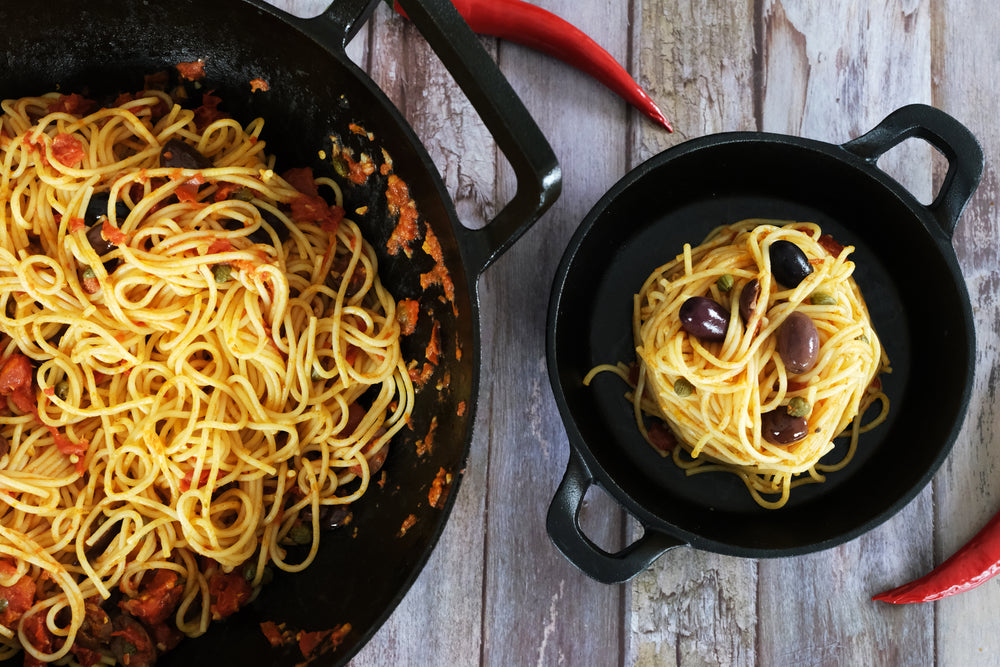Biryani: Kulinaarinen matka makujen ja perinteen läpi

Biryani, ruoka, joka ylittää rajat ja yhdistää ihmisiä aromaattisen mausteseoksensa ja murean, maukkaan riisin kautta. Tämä ikoninen ruoka omaa rikkaan historian ja monimuotoisen kulttuurisen merkityksen, joka on tehnyt siitä suositun ympäri maailmaa. Tässä blogikirjoituksessa tutkimme biryanin alkuperää, sen terveyshyötyjä, tämän herkullisen ruoan valmistuksen taidetta sekä olennaisia Sisäänpolttoja ja keittiövälineitä, jotka nostavat biryanikokemuksesi uudelle tasolle.
Biryaniin juuret
Biryani juontaa juurensa Intian alamaahan, ja ruoka on kehittynyt vuosisatojen aikana erilaisten kulinaaristen vaikutteiden kautta. Jotkut historioitsijat uskovat, että biryani sai alkunsa Intian alamaassa Mughal-imperiumin aikana, kun taas toiset liittävät sen alkuperän persialaiseen pilaf-ruokaan. Riippumatta tarkasta alkuperästä, biryanista on tullut kulinaarinen ilmiö, jolla on alueellisia variaatioita, jotka heijastavat alamaan monimuotoisia kulttuureja ja makuja.

Biryaniin liittyvät terveyshyödyt
Vastoin väärinkäsitystä, että biryani olisi hemmotteleva ja epäterveellinen ruoka, se voi itse asiassa olla hyvin tasapainoinen ateria, kun se valmistetaan harkiten. Aromikkaiden mausteiden, kuten kurkuman, juustokuminan ja korianterin, käyttö ei ainoastaan anna rikasta makua, vaan myös edistää ruoan mahdollisia terveyshyötyjä. Näiden mausteiden tiedetään omaavan tulehdusta ehkäiseviä ja antioksidanttisia ominaisuuksia, mikä tekee biryanista paitsi makunautinnon myös ravitsevan vaihtoehdon kohtuudella nautittuna.

Kuinka Biryani valmistetaan
Biryaniin valmistuksen taide piilee ainesosien huolellisessa kerrostamisessa ja hitaassa kypsennysprosessissa, joka antaa makujen sulautua yhteen. Kaksi pääasiallista biryanin valmistusmenetelmää ovat "Pakki", jossa liha ja riisi kypsennetään osittain ennen kerrostamista, ja "Kacchi", jossa raaka liha ja puolikypsennetty riisi kerrostetaan yhdessä. Menetelmän valinta riippuu usein alueellisista mieltymyksistä ja perheperinteistä, jotka molemmat vaikuttavat kunkin biryanin ainutlaatuiseen luonteeseen.
Sisäänpoltto
Biryaniin vastustamattoman maun ytimessä on mausteiden harmoninen sekoitus, joka maustaa ruoan. Tavallisia mausteita ovat kaneli, kardemumma, neilikka, laakerinlehdet, korianteri, juustokumina, mustapippurit, fenkoli, neilikka ja tähtianis, jotka antavat riisille ja lihalle tunnusomaiset maut. Lisäksi sahramilla maustettua maitoa käytetään usein antamaan ruoalle elävä väri ja hienovarainen tuoksu. Tuoreet yrtit, kuten minttu ja korianteri, tuovat raikkautta ja parantavat biryanin kokonaisvaikutelmaa.

Käytettävät keittiövälineet
Oikean keittiövälineen valinta on ratkaisevan tärkeää täydellisen biryanin saavuttamiseksi. Perinteisesti biryanin valmistukseen käytetään raskaspohjaista, leveäsuista kattilaa, jota kutsutaan "handiksi". Leveä pohja mahdollistaa lämmön tasaisen jakautumisen, ja tiiviisti sulkeutuva kansi auttaa vangitsemaan höyryn, varmistaen, että riisi kypsyy täydellisesti. Vaihtoehtoisesti voidaan käyttää raskaspohjaista pannua, Balti-astiaa tai Dutch ovenia jäljittelemään biryanin hitaan kypsennystekniikkaa.

Yhteenveto
Biryani, rikkaan historiansa, monipuolisten variaatioidensa ja hienostuneiden makujensa ansiosta, on ansainnut paikkansa rakastettuna ruokana ympäri maailmaa. Juhlissa nautittuna tai lohdullisena perheaterialla biryani on edelleen kulinaarinen mestariteos, joka ylittää rajat ja yhdistää ihmisiä. Joten seuraavan kerran, kun ryhdyt valmistamaan biryania, nauti paitsi mausta myös kulttuurisesta kudelmasta ja kulinaarisesta taiteesta, jota tämä ikoninen ruokalaji edustaa.
Aiheeseen liittyvät aiheet:















Jätä kommentti